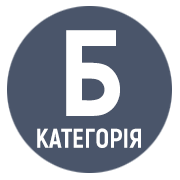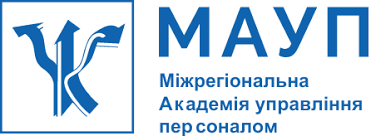ВПЛИВ ІНФОРМАЦІЙНИХ ТЕХНОЛОГІЙ НА СУЧАСНІ БОЙОВІ СТРАТЕГІЇ
DOI:
https://doi.org/10.32689/maup.it.2024.4.10Ключові слова:
війна, технології, штучний інтелект, прогрес, розвитокАнотація
У статті досліджено питання щодо впливу інформаційних технологій на сучасні бойові стратегії. У статті досліджено вплив інформаційних технологій на сучасні бойові стратегії. Мета роботи полягає у вивченні того, як новітні технологічні досягнення змінюють способи ведення бойових дій і формують нові стратегії, зокрема в контексті гібридної війни. Методологія включає аналіз сучасних технологій, таких як комп’ютери, електроніка, інформаційні системи, штучний інтелект, а також їх вплив на тактику і стратегію ведення війни. Автори використовують порівняльний та історичний аналіз для оцінки трансформації військових методів за допомогою новітніх інновацій. Наголошено на тому, що війна, як явище, є динамічною за своєю суттю, враховуючи постійно змінювані тенденції. Сучасне геополітичне середовище та технологічний розвиток формують нові стратегії й наслідки ведення бойових дій. Сучасні методи, які активно впроваджуються, в поєднанні з традиційним розумінням війни, складають основу концепції гібридної війни. Елементи цієї концепції можна спостерігати на всіх етапах історії. Сучасні технологічні досягнення, такі як комп’ютери, електроніка, інформаційні системи, засоби зв’язку, нові види зброї, підвищена швидкість, ефективні датчики, швидке розгортання, приховані технології, економія пального, смертоносність, космічні системи, біохімія та штучний інтелект, суттєво трансформують способи ведення війни. У цій новій системі противники використовують інформацію як засіб маніпуляції, що, в свою чергу, веде до виникнення нестабільних умов Як висновок, сказано про те, що вплив інформаційних технологій на сучасні бойові стратегії є беззаперечним. Вони не лише трансформують традиційні підходи до ведення війни, але й відкривають нові можливості для збирання, аналізу та використання інформації. Кібербезпека, автоматизація, штучний інтелект – всі ці елементи формують нову реальність військових дій, де інформація стає не менш важливою, ніж зброя. У майбутньому, з огляду на постійний розвиток технологій, важливо буде враховувати ці зміни, аби адаптувати стратегії до нових умов ведення війни. Наукова новизна роботи полягає у виокремленні інформаційних технологій як ключового елемента, що визначає сучасні бойові стратегії, а також у визначенні ролі кібербезпеки та автоматизації у новій реальності військових дій. Висновки свідчать, що інформаційні технології значно трансформують традиційні методи ведення війни, відкриваючи нові можливості для збирання, аналізу та використання інформації. Враховуючи швидкий розвиток технологій, майбутні стратегії повинні адаптуватися до нових умов, де інформація стає не менш важливою за зброю.
Посилання
Довгань Б. В., Мартинюк О. В. Становлення та розвиток поняття інформаційної війни. Вісник студентського наукового товариства ДонНУ імені Василя Стуса. 2020. № 12. С. 51–56.
Дунаєва Л. М. Дезінформаційні виклики під час російсько-української війни: політологічний аналіз. Політикус : наук. журнал. 2022. № 5. С. 73–78.
Жаровська І., Ортинська Н. Інформаційна війна як сучасне глобалізаційне явище. Вісник Національного університету «Львівська політехніка». Серія : Юридичні науки. 2020. Т. 7, № 2. С. 56–61.
Hayat,R. A. B. B. I. A. Hybrid Warfare: A Challenge to National Security. PCL Student Journal of Law, 5(1). 2021. P. 102.
Solmaz, T. Hybrid warfare’: one term, many meanings. Small Wars Journal, 25. 2022.
Steingartner W., Galinec D. Cyber threats and cyber deception in hybrid warfare. Acta Polytechnica Hungarica, 18(3). 2021. P. 25.





